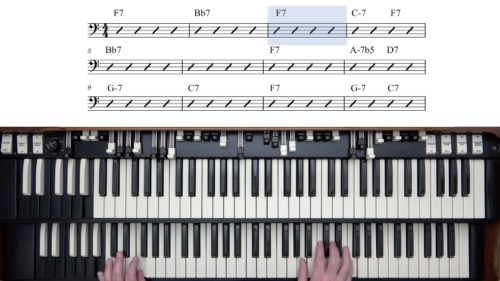Intros, Endings, & Turnarounds
Welcome to lesson 6 in our Chicago Blues piano course. In this lesson we will be exploring common intros, endings, and turnarounds that are found in the Chicago blues style.
The full notation of all examples can be downloaded below.
Using Licks For An Intro
An intro can be as simple as a lick played by itself. Many of the licks covered in the previous lesson are suitable for introductions. Steve shows some examples using repeated licks for the first 4 bars of the form.
Using Turnarounds For An Intro
The turnaround is at the end of the blues chorus and takes us to the V7 chord to start the form again. We can combine turnarounds with blues licks and the key is to end on the V7 chord.
Steve shows us some common turnarounds incorporating chromatic 3rd intervals to lead smoothly and convincingly into the V7 chord. These turnarounds can be used at the end of each chorus and also as introductions to our performances.
Lesson Downloads
-
Intros, Endings, & Turnarounds Lesson Notation File Type: pdf
Practice Tips
-
An intro can be a lick played by itself to kick things off, like Elmore James did on the record "Dust My Broom".
-
We can play a lick for the first 4 bars of the form and then come in on the IV chord.
-
The difference between an ending and a turnaround is that an ending finishes on the I7 chord, and a turnaround finishes on the V7 chord.
-
Experiment with 'top harmony' and incorporate this into your licks, intros, endings, and turnarounds.






Thanks for a great course on the Chicago blues! Am I right in thinking that the 4-bar intros that lead into IV are also leading into bar 4 of the 12 bar blues? So in reality these “intros” are counted as the first four bars of the 12? I ask because I thought that there were versions of the 12 bar blues that actually start on the IV. As in (for example) IV IV IV IV I I I I IV V I I Is this a valid version of the Blues? Or should they all start on I ?